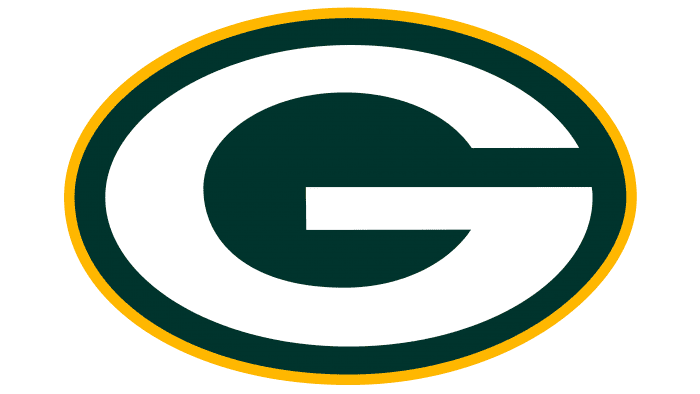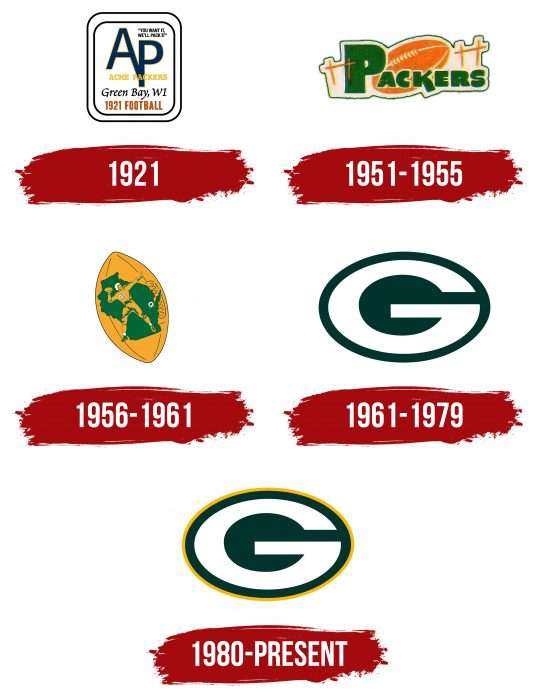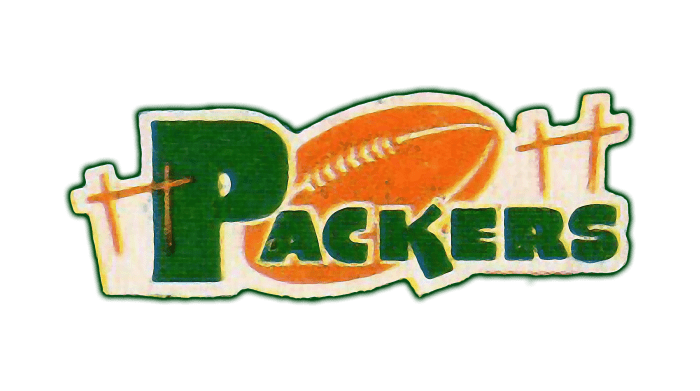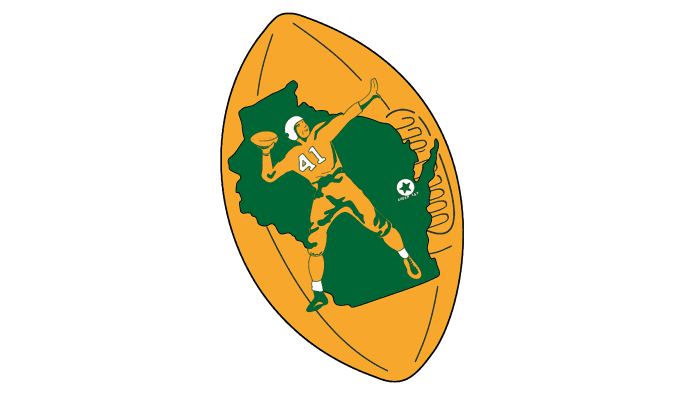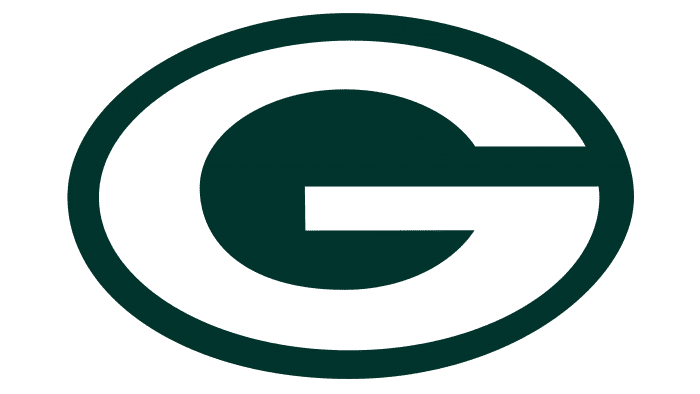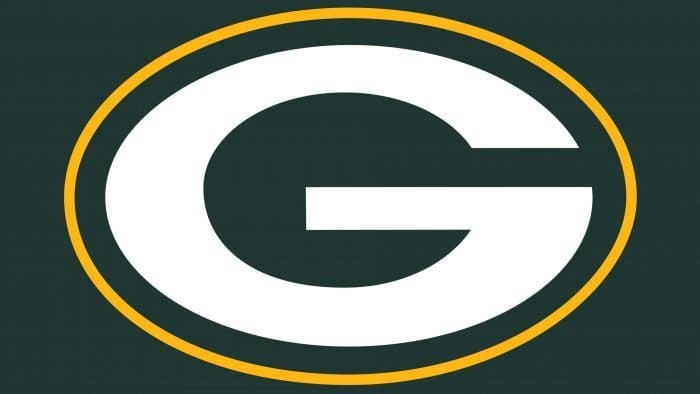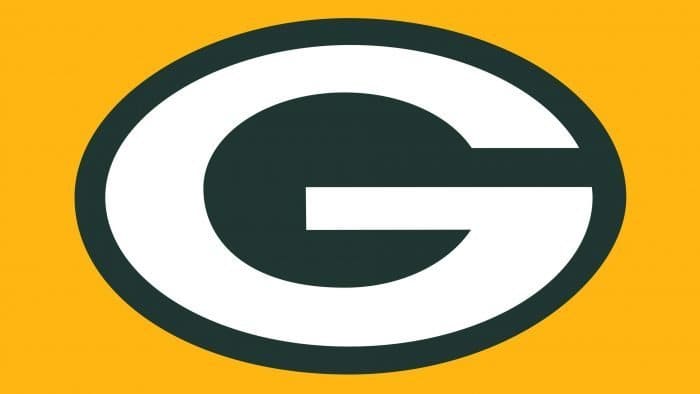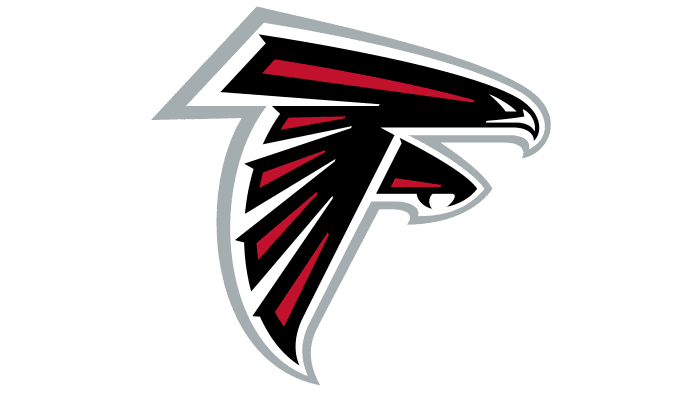The newest emblem features a modern design, style, and conciseness. The Green Bay Packers logo symbolizes professional affiliation, self-control, strength, intuition, and confidence in victory.
Green Bay Packers: Brand overview
| Founded: | August 11, 1919 |
| Founder: | Green Bay Packers, Inc. |
| Headquarters: | Green Bay, Wisconsin, U.S. |
| Website: | packers.com |
The Green Bay Packers are a team in the NFC North Division and a non-profit professional sports team in the top league. The team is based in Green Bay, Wisconsin.
To date, the club is considered unique, having 360,584 shareholders (as of 2015), making it publicly owned. Additionally, 4% of the franchise is in free circulation. Thus, it is a non-profit organization supported by ordinary people for an entire century. The team has no undisclosed owners, and its public ownership helps the franchise financially.
It all started with the unexpected decision of two rival football fans – Earl “Curly” Lambeau and George Whitney Calhoun. Lambeau approached his employer, a local packing company, asking for funds to purchase uniforms. He was given $500 in cash for the uniforms and equipment on the condition that the team would be named after its sponsor. This condition was met.
As a result, from 1919 to 1922, the team was led by George W. Calhoun, J.E. Clair, and Earl Lambeau. In the second half of 1922, the list of owners expanded: besides Lambeau, it included Gerald Clifford, Leland Joannes, Webber Kelly, and Andrew Turnbull. The franchise remained in this status until 1935. Then, all rights were transferred to a similarly named company, and the franchise completely passed into public ownership.
The corporation experienced a decline, went bankrupt, was renamed Acme Packing, went bankrupt again, and afterward, practically did not recover. But all this time, the “Green Bay Packers” rejoiced, carrying the name of their sponsor and founder.
Meaning and History
Tracking the team logos of the Green Bay Packers, one can trace its development. It all started with a simple emblem in the form of a rectangle with rounded corners and several words: “YOU WANT IT, WELL PACK IT,” “AP,” “ACME PACKERS,” “Green Bay, WI,” “1921 FOOTBALL.” Judging by the text, the main emphasis was made on the sponsor, name, and motto of the club.
Later, in 1951, the franchise got a logo corresponding to the sports theme. The central place in it was taken by the logo “Packers,” and in the background was an American football. In 1956, the developers removed the inscription and brought the ball to the foreground.
The Packers own the trademark on the “G” logo and have given limited permission for the use of a logo similar to that of other organizations, such as the University of Georgia and Grambling State University.
What is Green Bay Packers?
The Green Bay Packers are one of the oldest NFL franchises. It was founded in 1919 in Green Bay, Wisconsin, and still remains there, using Lambeau Field as its home stadium. The team has won 13 league championships, including 4 Super Bowls and 20 division championships.
1921
The debut logo of the Green Bay Packers is not sophisticated. The logo is simple and consists of standard names with various fonts on a white background. This is associated with the change of the company’s name to Acme Packing, which is depicted on the logo. It looks like a chevron – a brand patch on clothing. It is made in the form of an elongated rectangle with rounded edges. It is outlined by two black stripes with white space in the middle.
In the center of the logo are the intersecting letters “A” and “P,” as well as their definition – the name of the sponsoring corporation. All these elements are in one color: the capital letters are dark blue with a golden outline, and the word sign “Acme Packing” is golden. Below are the name of the city, state, and the year 1921. In the top right corner of the logo is the slogan, “You want it, we’ll pack it.”
1951 – 1955
The Green Bay Packers logo of this period acquired its signature color – green. It features an orange football with a yellow outline between two orange goalposts, which, according to the developers, signifies strength, superiority, the pursuit of victory, and perseverance. The word “Packers” is also present, typed in a large font with a capital “P” at the beginning. The background is a large, detailed football with two white stripes and lacing. There are no borders or other outlines – only white, hinting at free space for activity.
1956 – 1961
In 1956, the logo featured a quarterback with the number 41 and a yellow football. He is in a throwing pose and ready to throw the ball. In the background is the state of Wisconsin in green, where a white circle with a green star (the city of Green Bay) is placed.
The player’s helmet, leggings, and jersey number are white, and his uniform is yellow, like the football. In addition, another football is depicted on the logo, larger and with two characteristic thin lines. Designers placed key elements on it – as proof of the importance of American football to Wisconsin residents.
1961 – 1979
This Green Bay Packers logo design is radically revisited. The logo features an oval English letter “G,” resembling a football. This element was added when Lombardi asked the “Packers” equipment manager Gerald “Dad” Braisher to design a logo. Braisher entrusted this to his assistant, St. Norbert College student John Gordon. Satisfied with the white letter “G” on a green football, the pair presented it to Lombardi, who approved the addition.
1980 – today
The last trademark of the Green Bay Packers was introduced in 1980. But the actual year of its creation can be considered 1961, when the emblem with the white letter “G” on a dark oval background was presented. After 19 years, artists outlined the oval with a wide yellow line, which became the end of the entire redesign.
The original logo was designed by Gerald “Dad” Braisher and his assistant, John Gordon, a St. Norbert College student. They conceived the famous letter “G,” gave it shape, and meticulously worked out the small details.
Green Bay Packers: Interesting Facts
The Green Bay Packers are a special football team with much history and a big connection to their community.
- Owned by Fans: The Packers are the only team in the NFL that fans own. People buy shares to help keep the team in Green Bay, Wisconsin, a smaller place than other cities with NFL teams.
- Titletown, USA: Green Bay is called “Titletown, USA” because the Packers have won 13 NFL championships, more than any other team. This includes winning the first two Super Bowls and two more after that.
- Lambeau Field: The stadium opened in 1957 and is famous for being cold, earning the nickname “Frozen Tundra.” It’s one of the most well-known places to watch a football game.
- Vince Lombardi coached the Packers from 1959 to 1967 and led them to five championships, including the first two Super Bowls. The trophy for winning the Super Bowl is even named after him.
- Cheeseheads: Packers fans are called “Cheeseheads,” which shows off how much they love the team and the state’s dairy history. They often wear foam cheese hats.
- Packers-Bears Rivalry: The Packers’ rivalry with the Chicago Bears, which started in 1921, is the oldest in the NFL. It’s a big deal for fans, and the games are important.
- Famous Quarterbacks: The Packers were lucky to have Brett Favre and Aaron Rodgers as quarterbacks, winning MVP awards and Super Bowls (Favre in Super Bowl XXXI and Rodgers in Super Bowl XLV).
- Packers Hall of Fame: Inside Lambeau Field, there’s a Hall of Fame just for the Packers. It was the first one dedicated to a single football team and has lots of cool stuff to see about the team’s history.
- The “Ice Bowl”: The famous 1967 game, the “Ice Bowl,” was super cold, about -15°F. The Packers won this game against the Dallas Cowboys for their third straight NFL Championship.
- Stock Sales: The Packers sell shares to raise money for stadium improvements and other needs. Buying a share means you’re a part of the team, even though it’s more about being a fan than making money.
These facts show how the Green Bay Packers are not just a football team but a big part of their fans’ lives. They have a history of winning, community involvement, and some of the most memorable moments in the sport.
Font and Colors
Until 1955, the team promoted its name; then, in the second half of the 1950s, the approach to identity changed. In 1956, artists focused on depicting a football, which changed several times before being depicted as a stylized letter G. Initially, it looked quite realistic. On the side was depicted the state of Wisconsin and a player in a jersey with the number 41.
Now, the emblem is completely different. The ball remained, but now it is made in an abstract style: it can be recognized by the inverted dark green oval, outlined with a yellow contour. The letter “G” inside is also oval.
The developers of the newest logo decided not to use standard fonts, so they independently came up with the design of the letter “G.” True, not from scratch: they took a chopped font as a sample and gave the letter the right proportions.
Color plays an important role in logo design. The palette is chosen so that each shade looks harmonious. White smoothly transitions into dark green, creating the necessary contrast. The bright accent is the yellow stripe, which appeared in 1980.
Green Bay Packers color codes
| Dark Green | Hex color: | #203731 |
|---|---|---|
| RGB: | 28 45 37 | |
| CMYK: | 70 40 60 60 | |
| Pantone: | PMS 5535 C |
| Gold | Hex color: | #ffb612 |
|---|---|---|
| RGB: | 238 173 30 | |
| CMYK: | 0 25 100 0 | |
| Pantone: | PMS 1235 C |
FAQ
What does the Green Bay Packers logo mean?
The letter G in the team’s emblem means Green Bay. Rumors that it has a different meaning (greatness) are erroneous. Their source was Tiki Barber, who gave a humorous interview in honor of the upcoming Super Bowl and claimed that G stands for greatness.
Where did the Green Bay Packers logo come from?
The first version of the current Green Bay Packers logo was created in 1961. Two people were responsible for its development: Gerald Braisher, the club manager, and John Gordon, an aspiring artist.
When did the “Packers” switch from blue to green?
The team changed its color palette after Curly Lambeau left. This happened in 1950. Dark blue first became secondary and then disappeared altogether. It was replaced by green, which was initially combined with yellow mustard.
